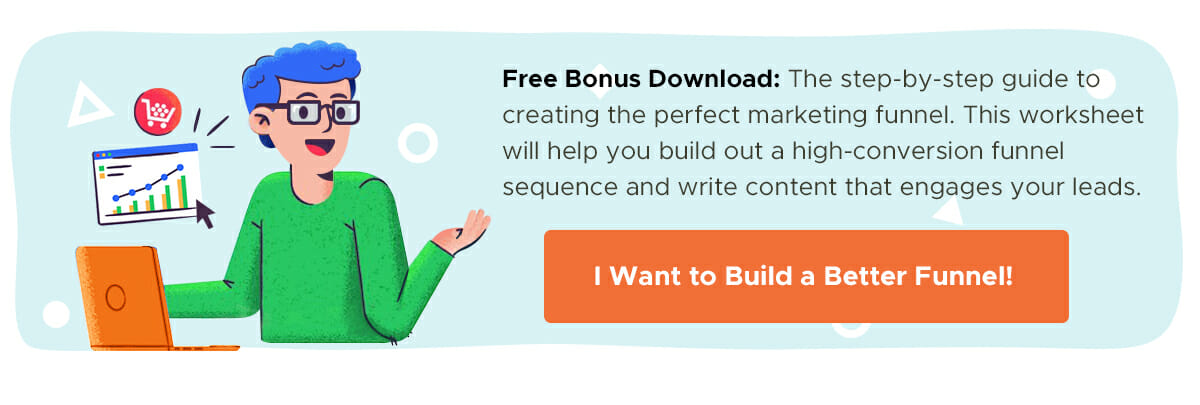NOW UPDATED! This article on remarketing has been refreshed for 2019 – enjoy!
Good marketers know that it’s a rare occurrence for a new visitor to land on a website for the first time and buy a product right then and there. So where do the majority of customers come from? Repeat buyers.
How can you leverage that knowledge to increase our retargeting conversion rates? Remarketing.
What Is Remarketing?
First, let’s clear up the definition of remarketing and how it differs from/compares with retargeting.
Since about 79% of people abandon their online shopping cart, your main goal is to get them to finish their purchase.
Retargeting primarily uses Internet ads to entice interested prospects back to your website to finish a purchase. This tactic turns window shoppers into buyers. By adding pixels (a short snippet of code) to your website, you will be able to track the user’s actions through cookies placed in their browser (i.e. “follow” them around the web).
Remarketing entails gathering your site visitors’ info and then sending them emails to persuade them to return to their abandoned shopping cart on your website and complete a purchase.
These terms are often used interchangeably and, indeed, are quite similar: Both of these strategies are designed to bring back customers who have bounced from your website after performing a certain action in order to persuade them to make a purchase.
Here are a couple of stats that will probably make you rethink the power of remarketing:
- 97% of e-commerce purchases come from repeat visitors
- 90% of all Internet users are retargeted at some point by Google Display
- One online retailer increased their conversation rate by a 161% (compared to their previous campaigns) as a result of a remarketing campaign
If you aren’t in on the game, you’re missing out!
How Does Remarketing Work?
When we hear terms like “remarketing” and “retargeting,” we usually think of complicated pixels and cookies associated with Google or Facebook ads. However, the concept is actually a lot simpler than that.
Think about driving down a highway and seeing a billboard for McDonald’s with a picture of a hamburger that says the next exit is 15 miles away:

You glance at it but keep driving. In another 5 miles you see another sign. By now you’re starting to feel hungry after looking at all these signs with food, so when the next sign comes up 2 miles from the exit, you decide to get off the highway for some lunch.
This is a very simple remarketing example.
In this article we will mainly talk about optimizing your retargeting conversion rates online, though remember that your audience may be better reached by remarketing via phone, email or signs.
If you choose an online remarketing strategy, you might run ads through Google, Facebook or YouTube. These platforms use a system that uses cookie tracking to tag non-converting website visitors and then follow them around the web. Your previous visitor might be on another site but he/she can still see an ad for your site.
For example, I was looking at some electronics on Best Buy and later that day I was on another website. And guess what popped up on the side of my screen?

That’s right. This Best Buy ad is a good online remarketing example.
The potential for business growth and conversion rate increases can be staggering. According to an Adobe report, “retargeting is responsible for boosting ad responses by as much as 400%, and can help to improve brand recall and awareness in visitors.”
Okay, so how do you get started with increasing your retargeting conversion rate?
Dive Deeper:
Before You Start: Crucial Remarketing Concepts for CRO
If you are focused on increasing conversions online, you need to have a few things in place before setting up a remarketing campaign.
Understand Your Buying Cycle
Setting up long cookie times that result in multiple remarketed ad viewings over time doesn’t make financial sense if your company’s buying cycle is short.
Think of buying cycles in terms of traffic temperatures.
A retailer like J Crew has short buying cycles. If someone is looking to purchase a new shirt, they probably won’t be looking for very long. The buying cycle might end that day.
In that case, you may be better off investing your ad resources elsewhere in order to encourage immediate purchases.
However, if you’re trying to sell industrial machinery for over $10,000, your buying cycle will be a little longer. So doesn’t it make sense to continue to retarget your prospects for several months?

Dive Deeper: Buyer’s Journey 101: What Your Email Data Says About Your Customers
Understand How to Measure the ROI of Remarketing Campaigns
Measuring the financial impact of multiple ad displays can be challenging, as it may be difficult to assess the value of each individual step in the view-through process.
And measuring analytics can be a tricky process, so make sure that you have a plan in place before jumping in.
As a result, remarketing is best used by companies with past experience running traditional PPC campaigns (or by those less-experienced advertisers who are willing to bring on professional consultants to ensure campaign profitability). If you are about to launch a remarketing campaign and want it to result in high conversion rates, make sure that you have a system in place to track ROI.
Setting Up Your First Campaign for Conversion Success
Remarket to People With High Intent to Purchase
Targeting everyone who comes to your site might be very broad and use up all of your ad spend. Instead, try to target people who have already been to a specific page, like a sales or cart page.
This is one of the best ways to easily increase your conversion rate, as you are simply cutting out a large number of non-converters in your testing group.
Target People Who Are Willing and Able to Buy
This one goes along with intent to purchase, but there is one subtle difference: Some people may be engaging with your content without the means to buy.
Does it make sense for Tesla to retarget 15 year olds? Probably not. Sure, they may have demonstrated strong interest, but they probably don’t have the money to buy one. Don’t waste your ad dollars.
If you’re wondering how well targeting a niche audience works, check out this Growth Everywhere video of Andy Mackensen of SnackNation and see how he targets niche audiences to grow his business:
Exclude Current Customers/Clients
This is important because if you continue to try to sell to your current customers in the same way you sell to prospects, they won’t feel like valued customers. Make sure that you treat every single one of your customers with respect and make them feel appreciated. Remember that it is much more expensive to acquire a new customer than to keep current customers happy.
Segment Intelligently
Have you ever seen ads that just make you wonder what the heck the marketer was thinking serving it to you? We already wrote a complete guide on segmentation, but I’ll give you an example here. If I were searching for car tires and was shown an ad about luxury resorts, wouldn’t that make you think that the luxury resort brand is crazy? Don’t let your brand turn into a laughingstock.
Dive Deeper:
Use Geotargeting
Speaking of segmenting intelligently, make sure you are utilizing geotargeting. Geotargeting is pretty much just what it sounds like: targeting people based on where they live.
For example, if you have a doctor’s office in Los Angeles, you don’t want to be targeting someone in Washington D.C.. Even if someone in Washington D.C. is looking for a doctor, they will likely not fly all the way to Los Angeles just for a regular checkup.
However, if you are a software company selling services nationwide, you can use geotargeting. For example, if you notice a trend in your analytics, like 60% of your customers are from Chicago, you might want to remarket to people in Chicago. You can provide a customized ad just for them.
This is also very helpful if your website is only in one language. Even if you are a company that sells worldwide, if your website doesn’t have a French translation, you might not want to remarket to people in France.
Target Non-Converting Audience Segments
One ideal use of remarketing is to target users who have abandoned their shopping carts with ads that offer discount codes for un-purchased items and then redirect click-through visitors directly to their check-out pages.
Setting up remarketing campaigns for broad, undefined user groups and failing to match these general segments with targeted messages is likely to result in poor remarketing ROI.
If this is your first time setting up a remarketing campaign, you may have to play with it with some A/B testing.
Dive Deeper: How to Run A/B Tests that Actually Increase Conversions
Utilize Dynamic Retargeting
Dynamic retargeting goes a little further than audience segmentation: Not only are you targeting a particular visitor, but you’re also showing them exactly what he or she wants to see. With dynamic retargeting, you can track the last product that a person viewed before they left your website and you can then retarget them around the web with that exact product.
So going back to the Best Buy example. The last product that I viewed was the Hisense 65” TV.
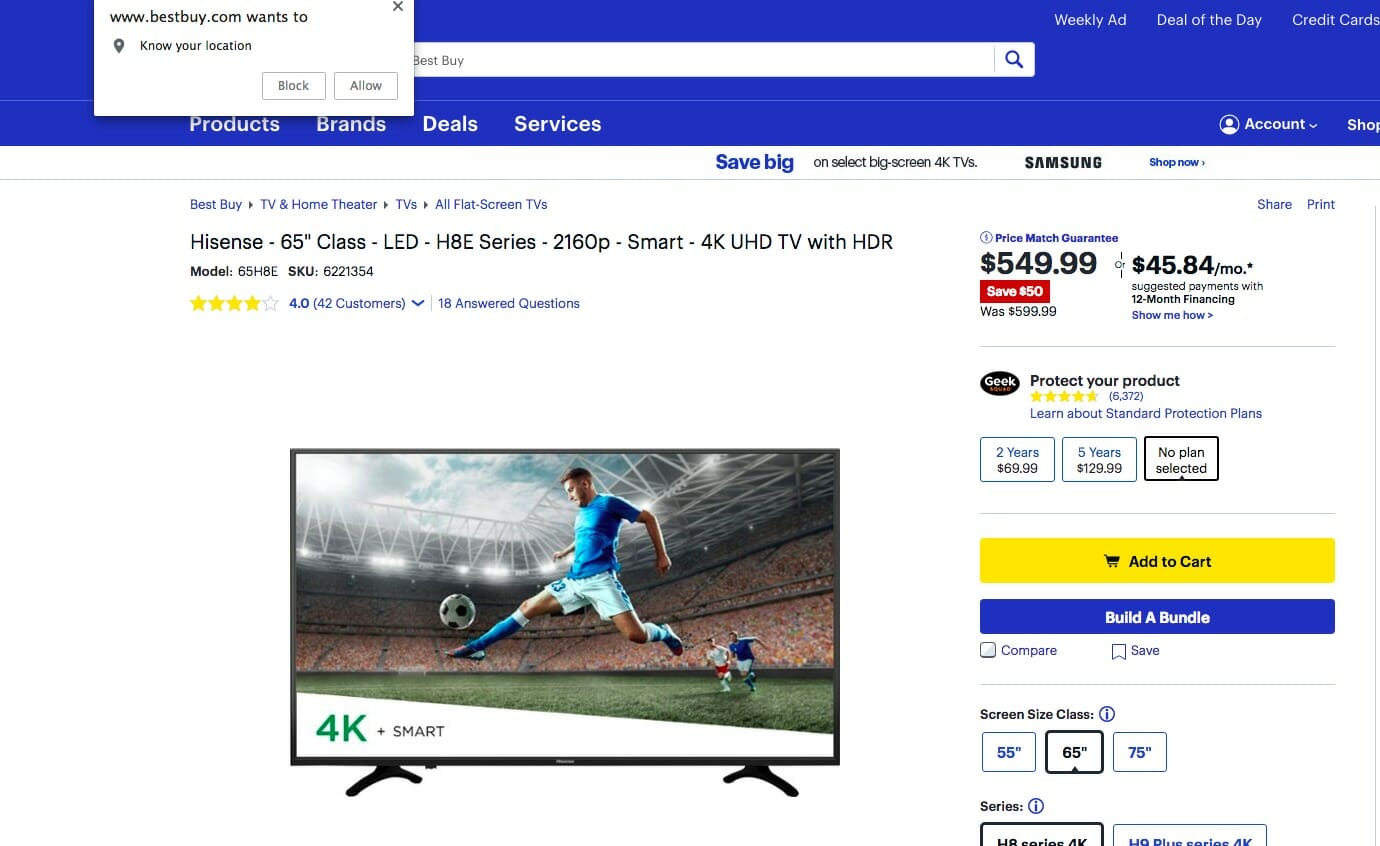
Guess what my retargeting ad looked like?

This method has been proven to convert like crazy. Display ads have an average CTR of 0.07%, but retargeting ads’ CTR is 0.7% – which is 10x better. Make sure you take advantage of this!
Dive Deeper: Retargeting 101: Why It’s Essential for Any Marketing Funnel
Creating Convertible Copy for Your Retargeting Ad
Don’t Be Pushy
Remember that the goal of remarketing isn’t just so that the customer sees your brand seven times (if we are thinking of the rule of seven) and then converts. There is a psychological process that is going on in each of those seven views that is building awareness and trust with your brand:
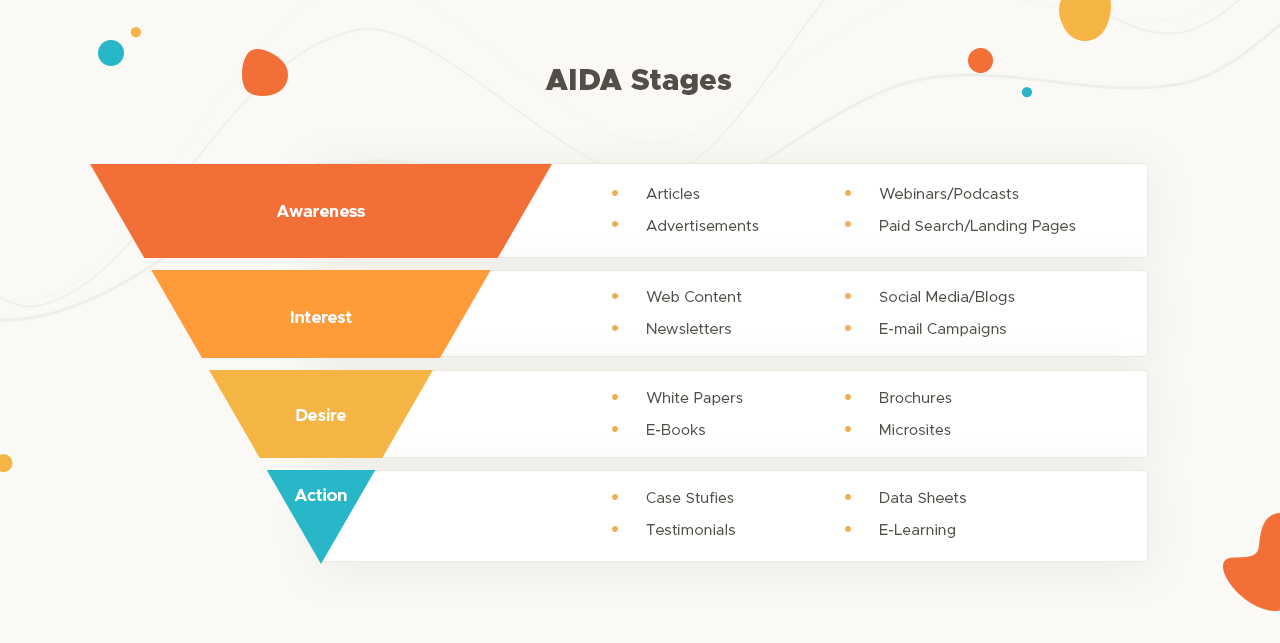
So make sure you are sending a positive message about your brand and invest some quality copywriting into your ad.
Provide Value
If you have a short buying cycle, offer a discount or some other freebie. If you have a longer buying cycle, maybe offer a free lead magnet (like a high-value whitepaper, case study or webinar admittance). Think of it in the same way that you would think about writing an email to someone: How can you help your customer?
Staples sells office equipment, most of which is usually purchased in a short buying cycle. Take a look at this retargeting ad that offers some value to the customer in the way of free shipping on orders over $49:

Use Consistent Branding
If you aren’t consistent in your branding, your customers won’t even remember going to your website. You can be consistent through your branding by using the same language, colors, pictures and offers on your website, social networks and ads.
Remember that the goal here is for people to see you again and again in order to build up a familiarity. If people aren’t familiar with your brand, you will never be able to grow. Even in the very simple Staples retargeting ad above, using the same color helps to reinforce the brand.
Add a Call to Action (CTA)
Make it easy for your potential customers to take the next step that you want them to take by giving them a simple but clear action. It might be a “buy now” button if you are an e-commerce site or “start your free trial” if you are a software company.
Take a look at the Staples ad again – notice how they have a “shop now” button?
Dive Deeper: How to Create CTAs that Actually Cause Action
Conversion Tips While Running the Remarketing Ad
Pause Ads that Aren’t Converting
If you notice that one of your ads isn’t doing that well, put it on hold and try another one. Don’t keep beating a dead horse! It may be that you just need to make a few adjustments.
Try Some A/B Testing
Everyone already does on-page A/B testing, so why wouldn’t we also do it in our ads? If you have been using the same ads over and over again, and you are starting to experience fatigue, try running some A/B tests. You might even want to go back to a campaign that worked really well and change just a few things and relaunch it:

Change Up Your Offer
If you keep serving the same customers the same ad, they are likely to get bored or even annoyed after a while. Think about when a company sends you multiple emails asking you to buy the same product or sign up for a service that you already have every time. At first you might engage, but after a while you just get sick of it and start hitting the delete button. If that email was offering you fresh content and new offers, you might keep opening it.
Dive Deeper:
Assessing the Results of Your Remarketing Campaign
Congratulations! If you made it this far, I’m assuming that you have finished your first remarketing campaign. Now what? Are we done?
Nope. Now it’s time to take a good look at your analytics. Did you ruin a lot of Christmas surprises? 😉

Ok, seriously though…
Here are some good questions to ask yourself:
1) Did you hit your conversion goals?
If you didn’t hit your goals but came close, you might just need to tweak a few things to boost the conversion rate. If not, we will discuss that a little further down.
2) Where is the location of your highest-converting customers?
When you create your next campaign, go back to your analytics and see which region had the most conversions. Then bump up the ad spend in that region.

3) Which pages on your site did the customers who converted visit?
Was it a particular product page? Was it your sales page? Was it the FAQ page? Take a look at that page and note what stands out to you. Now implement that on your other offers/product pages.
4) What was the offer of the most successful retargeting ad?
Were you offering a free e-book? Was it a webinar? Look for a pattern that shows that your audience prefers one medium, like a webinar, over others, like blog posts. Next time you create a retargeting ad, make sure that you use that medium in your offer.
5) What did the copy and design of the highest-converting ad look like?
Was the copy silly? Serious? Minimalistic? Get a feel for the tone that your audience prefers. If you are a personal brand, don’t feel that you need to start changing your voice, but use this info to better understand your customers. In the next retargeting ad, try integrating that with your brand.
Dive Deeper:
6) Were there any patterns in the customer journey?
Did you notice that everyone who converted landed on a single page once in the journey? Did you notice that they all had to see the retargeting ad seven times before buying? Fourteen times?
Use this info to take note of how long your buying cycle is. If your buying cycle is shorter than you expected, run your retargeting ads for less time. If it was longer, run it for more time. Are you making an effort to ensure that your customer journey is personal? If not, take a look at this guide.
7) What other sites did customers who converted visit?
You may be able to do some sort of partnership or guest post with these sites. Try to get them on your side and promote you. Clearly, the people who visit these sites are ready to buy. In fact, you can even do some research on this before setting up a campaign with a tool like Similar Web to find out what other sites your customers like to visit.
Here is an example of competitors for Macy’s:
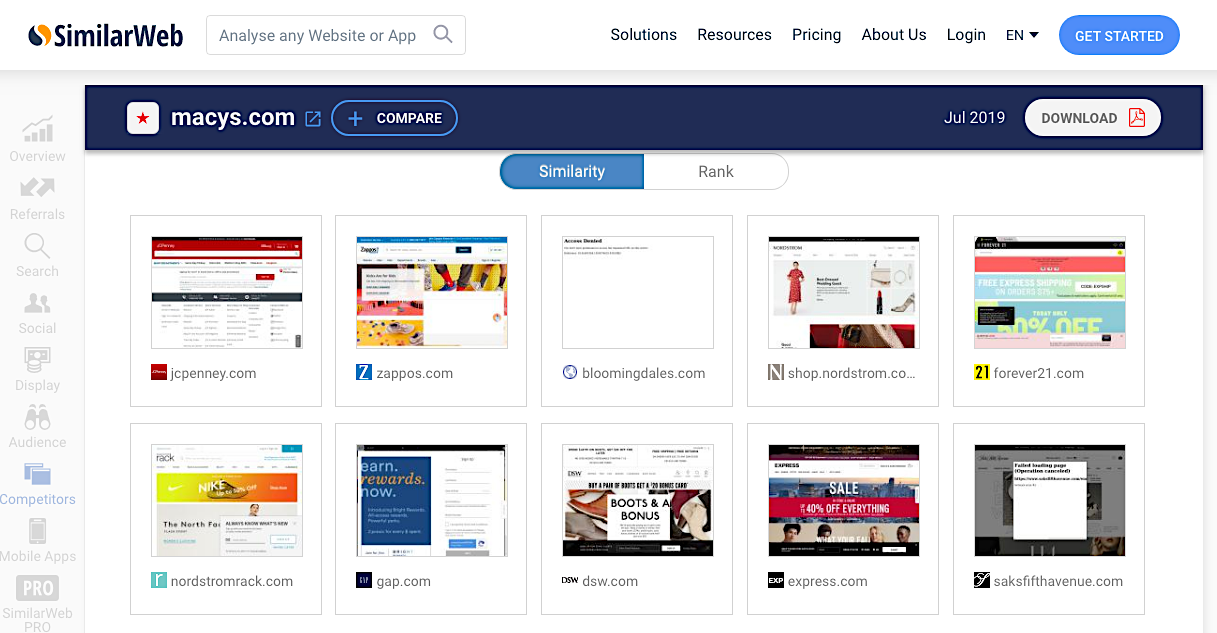
If your campaign failed and you still aren’t sure why, ask yourself these questions:
1) What was the last page that people visited before leaving the site?
If there is a pattern on the last page that a person visited before leaving for good, check the user experience for that page. Evaluate what the offer is (or isn’t). How far down in the sales funnel is it? If it is closer to the top, the traffic you might be retargeting is just too cold. If it is closer to the bottom, it might be that you have an issue with the actual offer or how it is being presented.
2) On what pages did people drop off?
There might be an issue, either technical or otherwise, that you can fix. Take a look at the offer, the copy and whether or not the retargeting offer was the same as the offer on the ad that the customer clicked through.
Dive Deeper:
3) Are you getting people to click through?
Look at what the average CTR is for your industry and see if you are close. If your CTR is super low, it is probably a copy issue with your retargeting ad. Make some changes and run it again with some more A/B testing.
If your CTR is ok, you probably have an on-page issue. Does your offer on the landing page say the same thing as your offer on the retargeting ad? Is the info you are giving the person relevant? How long are they staying on that page before bouncing?
4) How soon did you give up on the campaign?
Think about your niche. If you are selling a $1,000+ product, the buying cycle is going to be a little bit longer, so make sure that you are targeting them for a long enough period of time.
5) I still don’t know why it didn’t convert
If you still can’t figure it out, try using Survey Monkey, an online survey company:
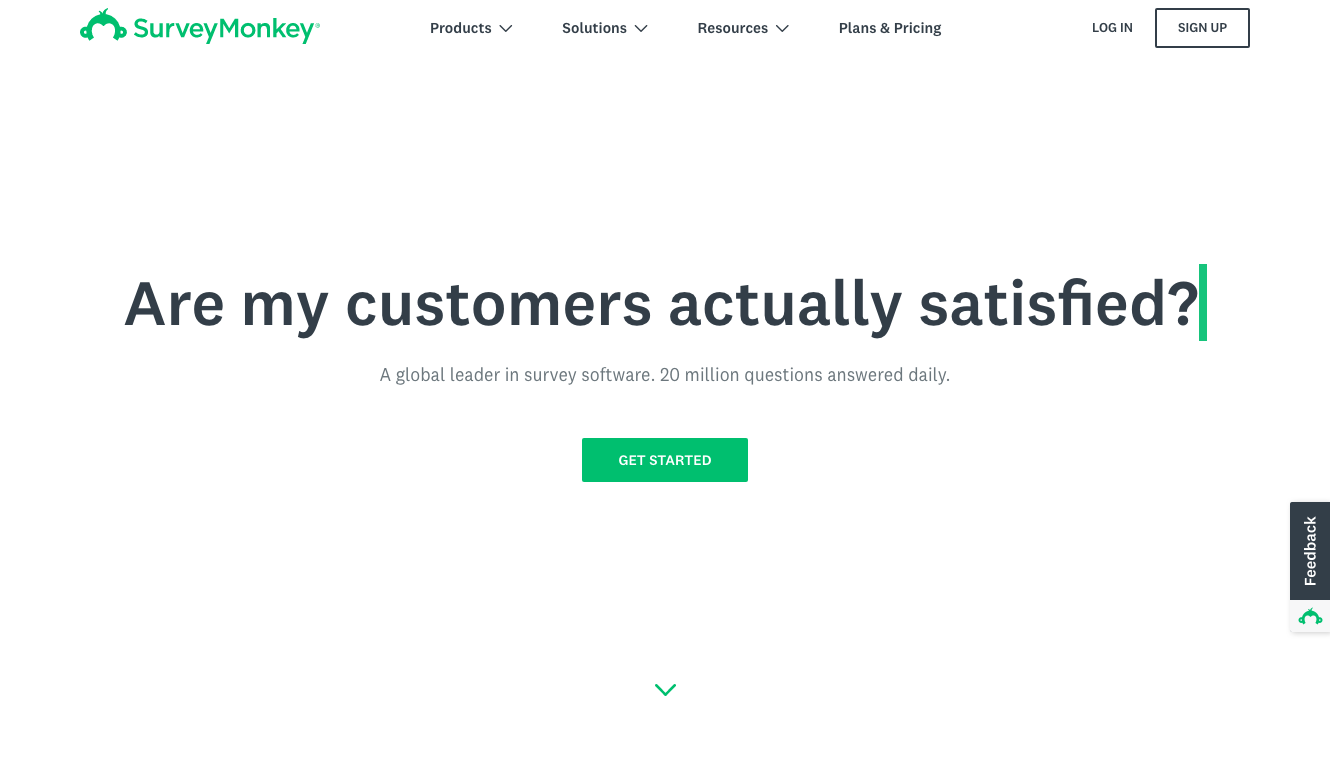
Just ask your audience why they didn’t buy. You can use all the tools in the world, but at the end of the day, remember that these are real people with real problems. Send them an email like this:
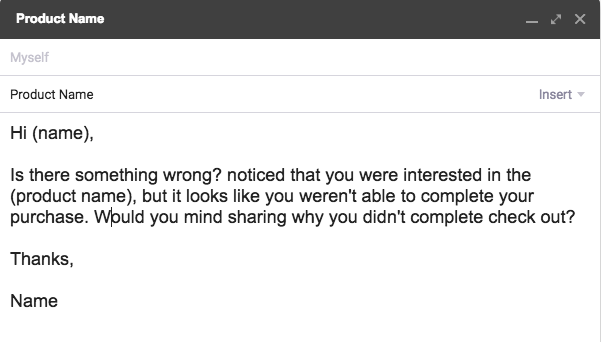
Remarketing Concerns
One of the first objections that many people raise against remarketing, and retargeting in particular, is perceived privacy concerns. And, indeed, the idea of an advertiser’s message following you from site to site is enough to make even the most web-savvy of browsers feel a little paranoid.
It is important to note, however, that remarketing cookie codes contain no personally identifiable information. In fact, it’s not even “you” that they’re tracking – it’s your presence in a particular data group, whether you’re being tracked due to your online behavior, demographics, location or online interests.
As a result, remarketing meets the standards laid out by the Interactive Advertising Bureau’s “Privacy Matters” campaign (though this distinction may not put the minds of all consumers at ease).
Conclusion
Remarketing is a great tool to lift conversion rates when carried out correctly. There is certainly a learning curve to it, so if you are just starting out, don’t expect the first campaign to blow it out of the water. Keep testing, keep trying and come back to these tips!
